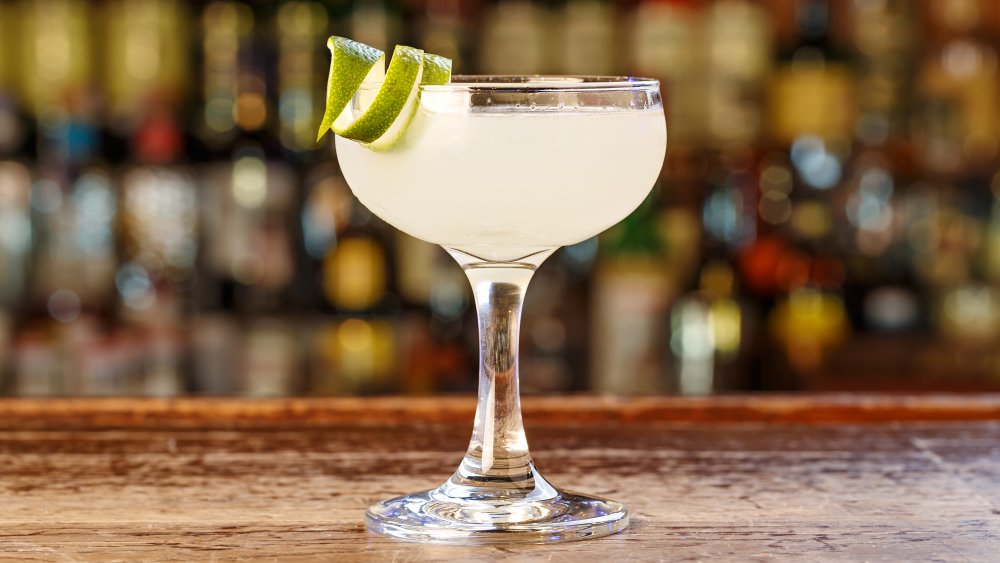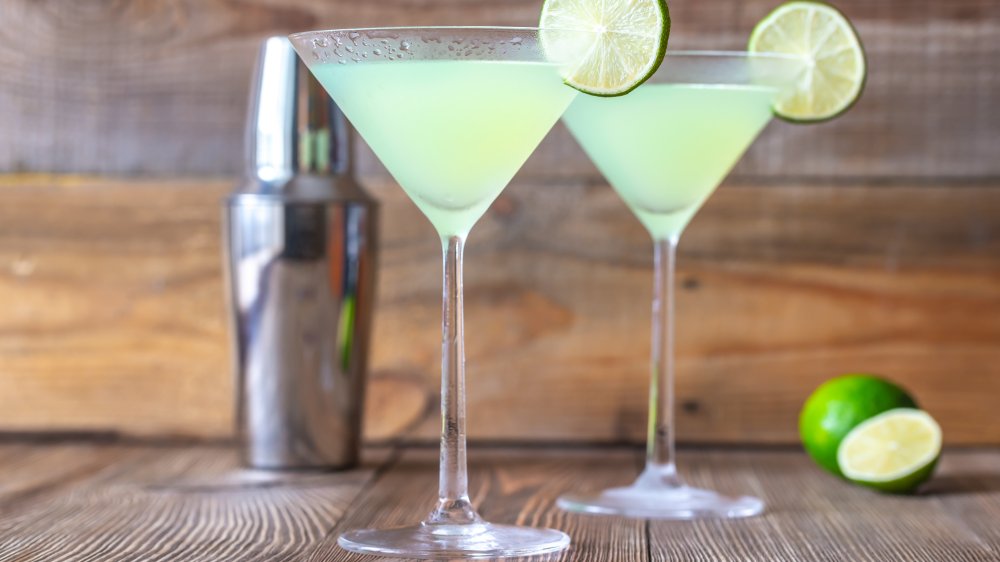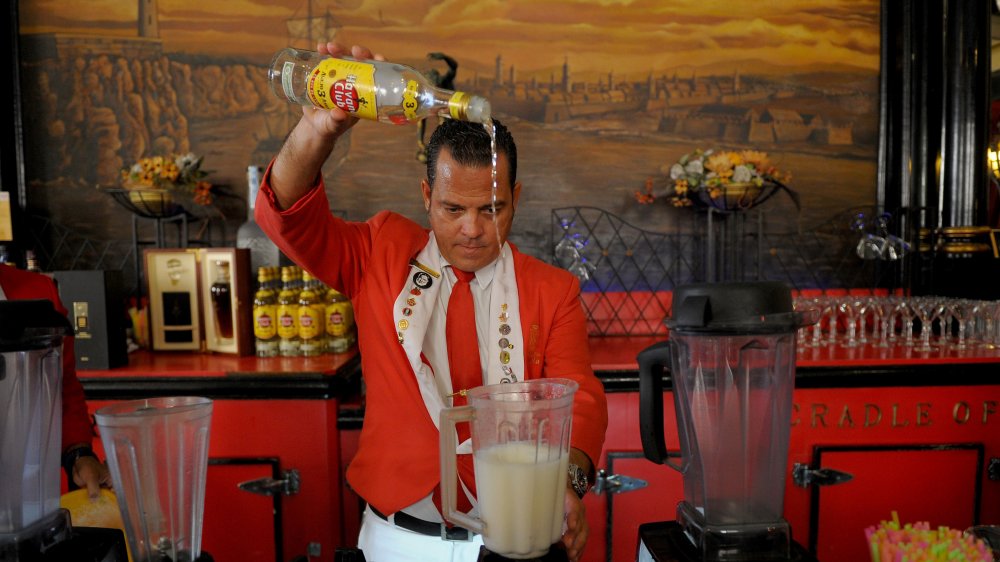The Surprising Origin Story Behind The Daiquiri
Over centuries, the daiquiri has evolved from its earliest roots as an old-time seafaring "necessity" to a finely honed Cuban-crafted cocktail to mass-produced, blender-fueled bastardization and back again.
According to The Alcohol Professor, a predecessor of the daiquiri combined a version of its main ingredients back in 1740, as the aptly nicknamed Admiral Edward "Old Grog" Vernon attempted to keep naval officers sober-ish by tempering their rum supply with water and juice, typically squeezed from limes. Difford's Guide, meanwhile, notes that the daiquiri is compositionally similar to the 19th-century Cuban cocktail called Canchánchara, which mixed rum, lime, honey, and water.
By 1898, as the Spanish-American War raged, one American engineer in search of mining prospects, Jennings Cox, found himself in the Cuban town of Daiquiri, but here the story splinters into possible scenarios: Cox may have whipped up the drink as a way to ward off yellow fever among his team, or he perhaps had his gin supply sucked dry at a party one night, leading him to reach for the readily available rum in Cuba (via Liquor.com).
The invention and early forms of the daiquiri
Interestingly, the original recipe for the daiquiri did not feature limes at all. According to The Alcohol Professor, Cox combined sugar, rum, mineral water, crushed ice, and lemon juice in quantities large enough to create a punch designed to serve six people, calling the concoction a "daiquiri" in honor of its birthplace. A war veteran named P.D. Pagliuchi later claimed to have helped concoct the name, as Cox's first instinct was to choose the more literal title of Rum Sour, and Pagliuchi suggested daiquiri instead (via Liquor.com).
Origins aside, the sweet-and-sour cocktail would soon travel to the United States via visitors to Cuba who returned home, and by 1914 a recipe for the slightly misspelled "Daiguiri Cocktail" would be printed in the book Drinks by Jacques Straub (via Difford's Guide). Meanwhile, notes The Alcohol Professor, the classic combo was being perfected by Cuban bartenders, as they whittled down the recipe to a single-drink size; started shaking with ice and straining, instead of serving over ice; and nixed the mineral water in Cox's version.
The daiquiri's 20th-century evolution
Though the daiquiri had already made its way to the United States — The Army and Navy Club in Washington, D.C., claims its first U.S. appearance — it was an American literary legend with a notorious taste for tipples, Ernest Hemingway, who helped fuel its position as a household name. Hemingway even inspired his own twist on the classic, called the Papa Doble, which doubles the dose of rum and often uses less sugar (or no sugar) in favor of grapefruit juice and maraschino liqueur (via Bacardi).
Later innovations and alterations — crushed ice, the Waring Blender, fruity spinoffs, the tiki-bar trend — would further change the course of the classic daiquiri (and eventually brand it as a best-avoided, sickly sweet atrocity), but the explosion of from-scratch cocktails in recent decades has helped to change that perception (via The Alcohol Professor). Daiquiri shame, begone; today's mixologists have firmly planted the basic-but-beautiful original back in its place as a quintessential cocktail legend.


